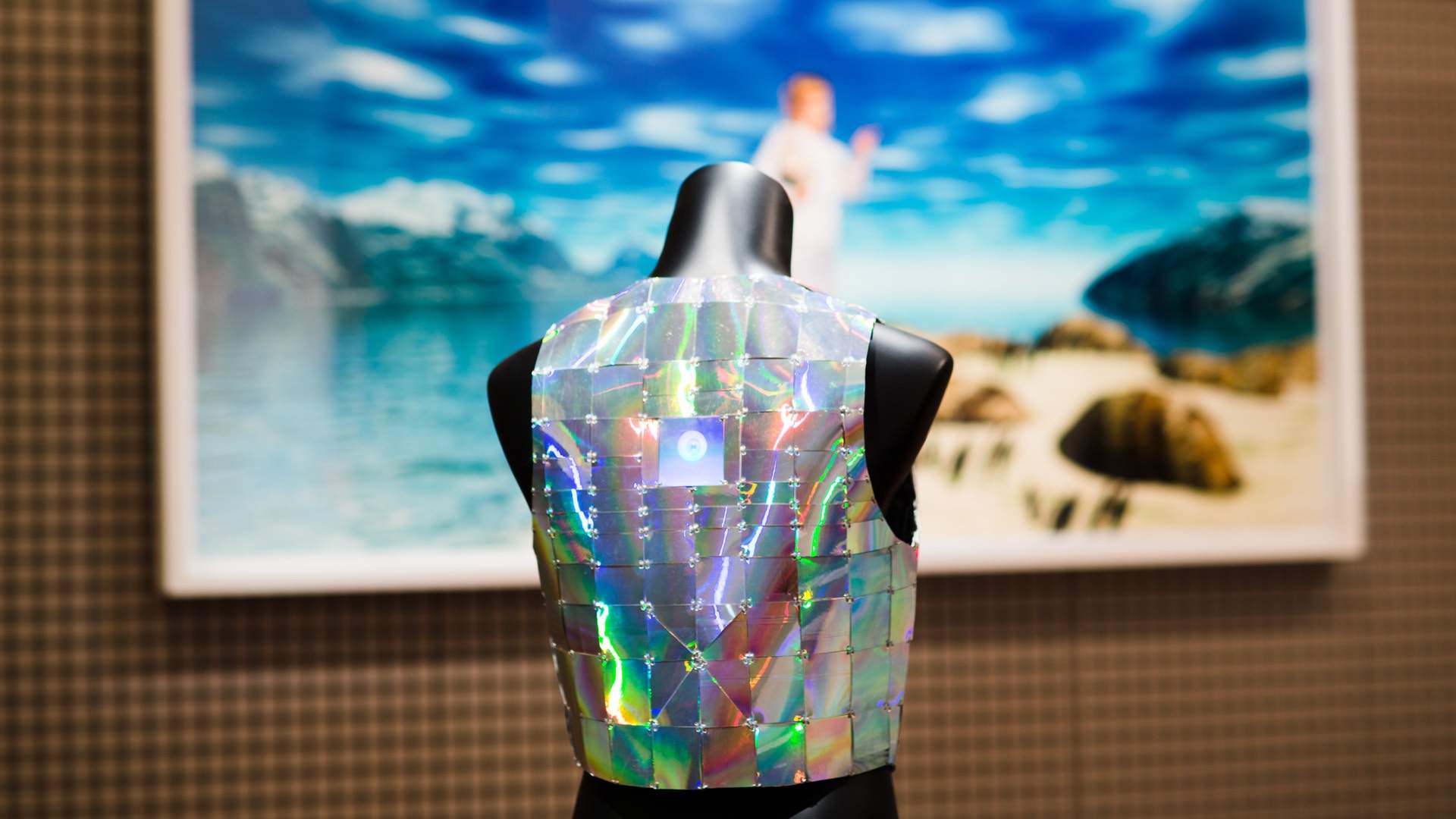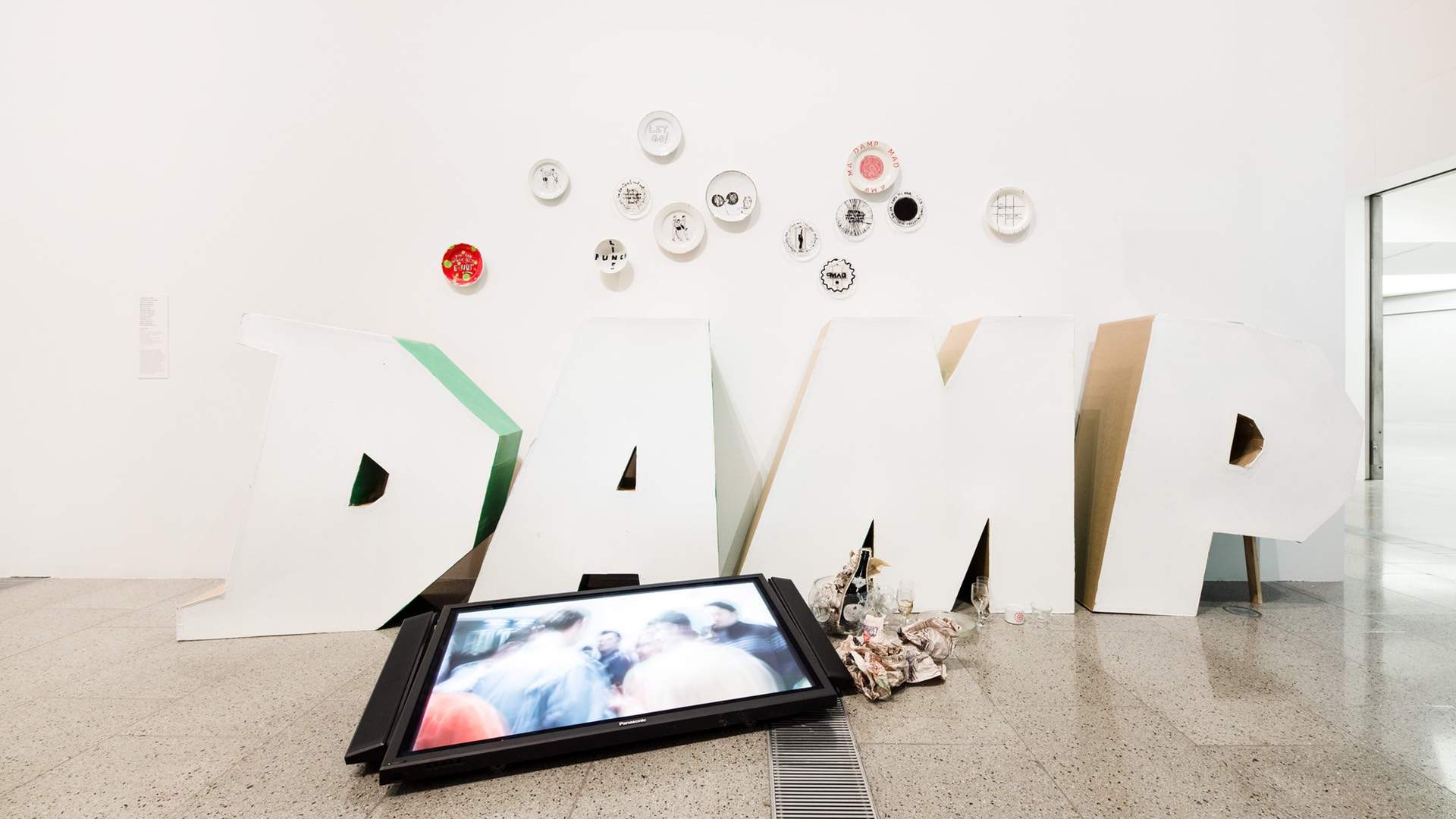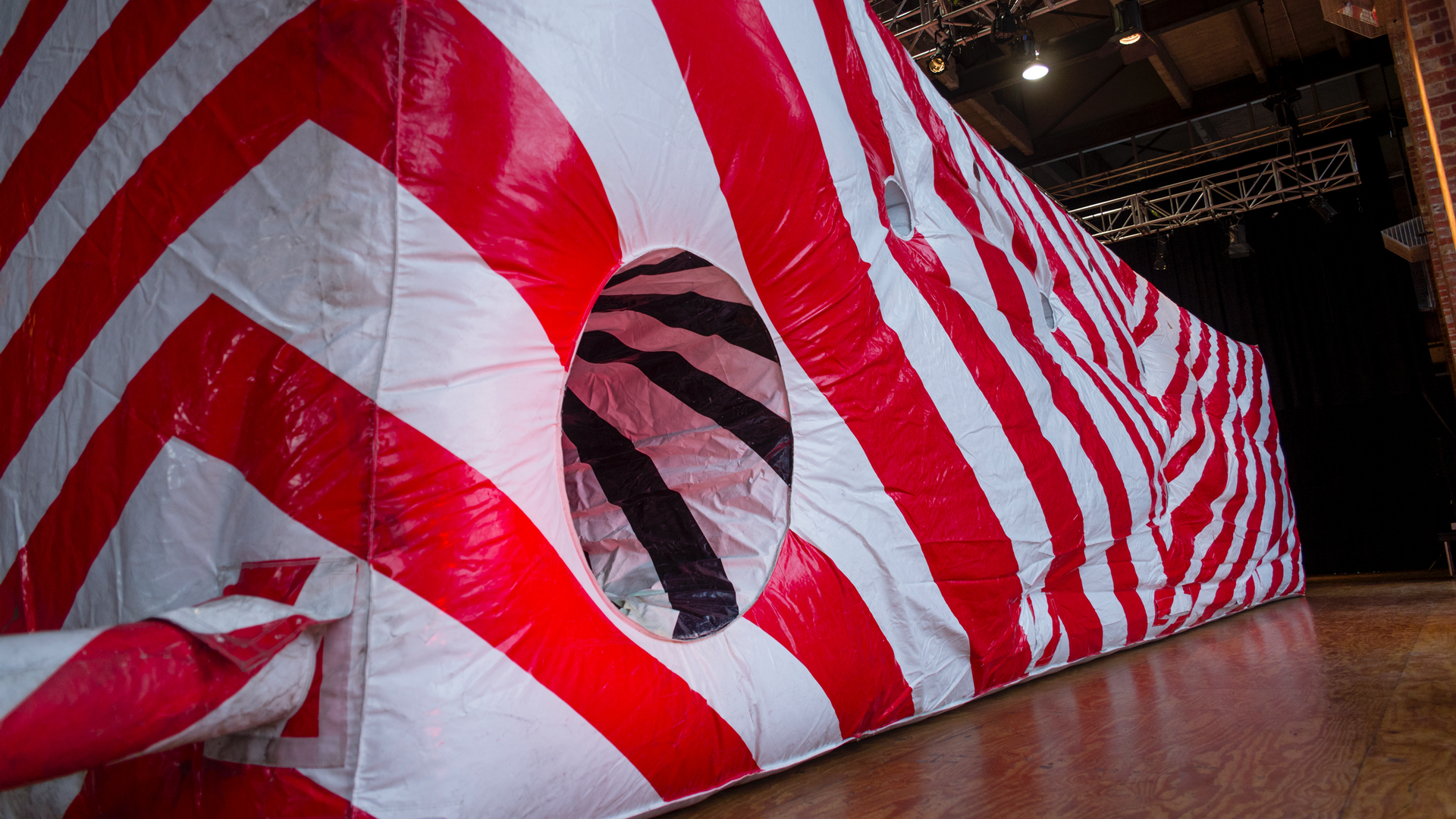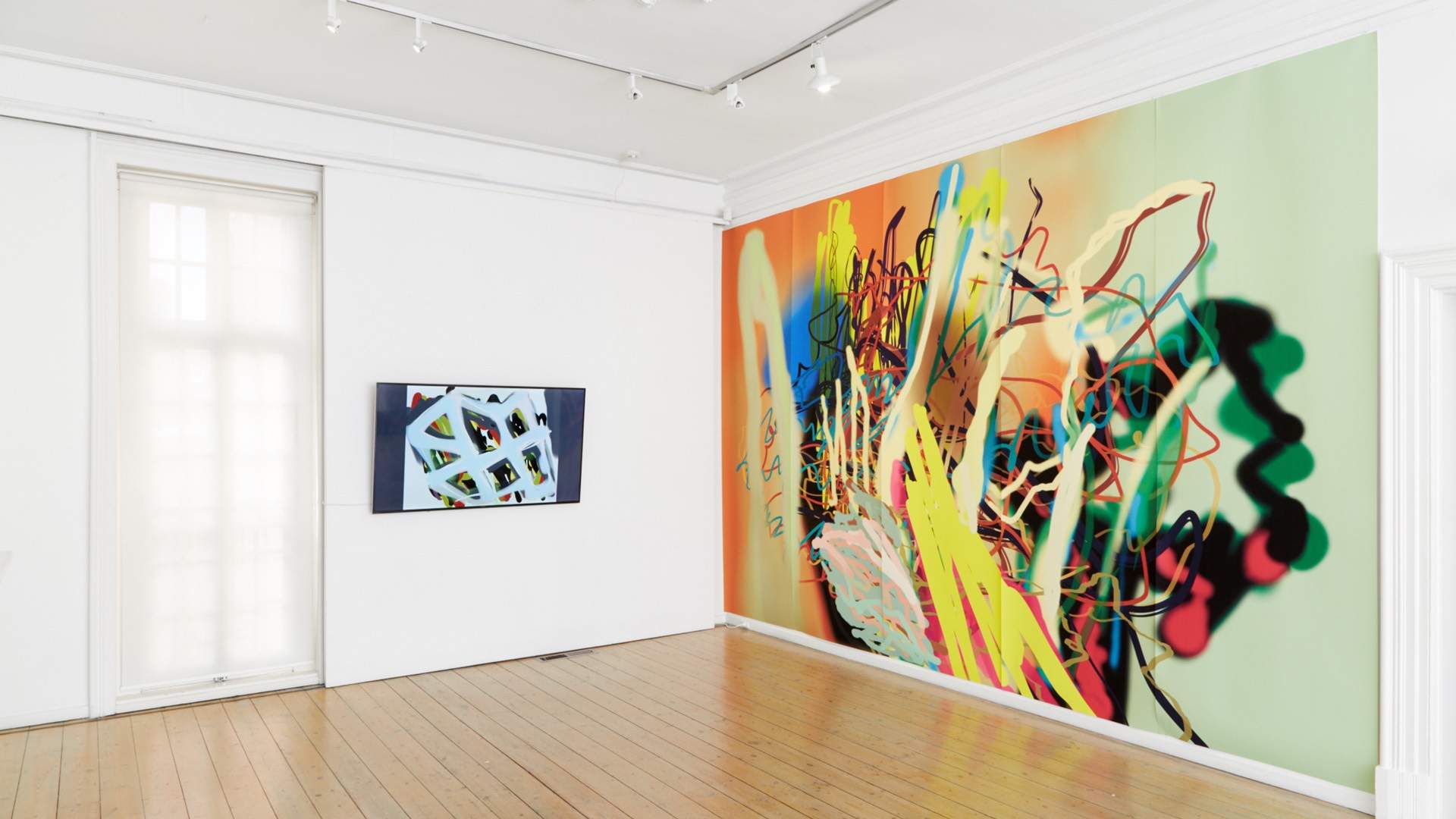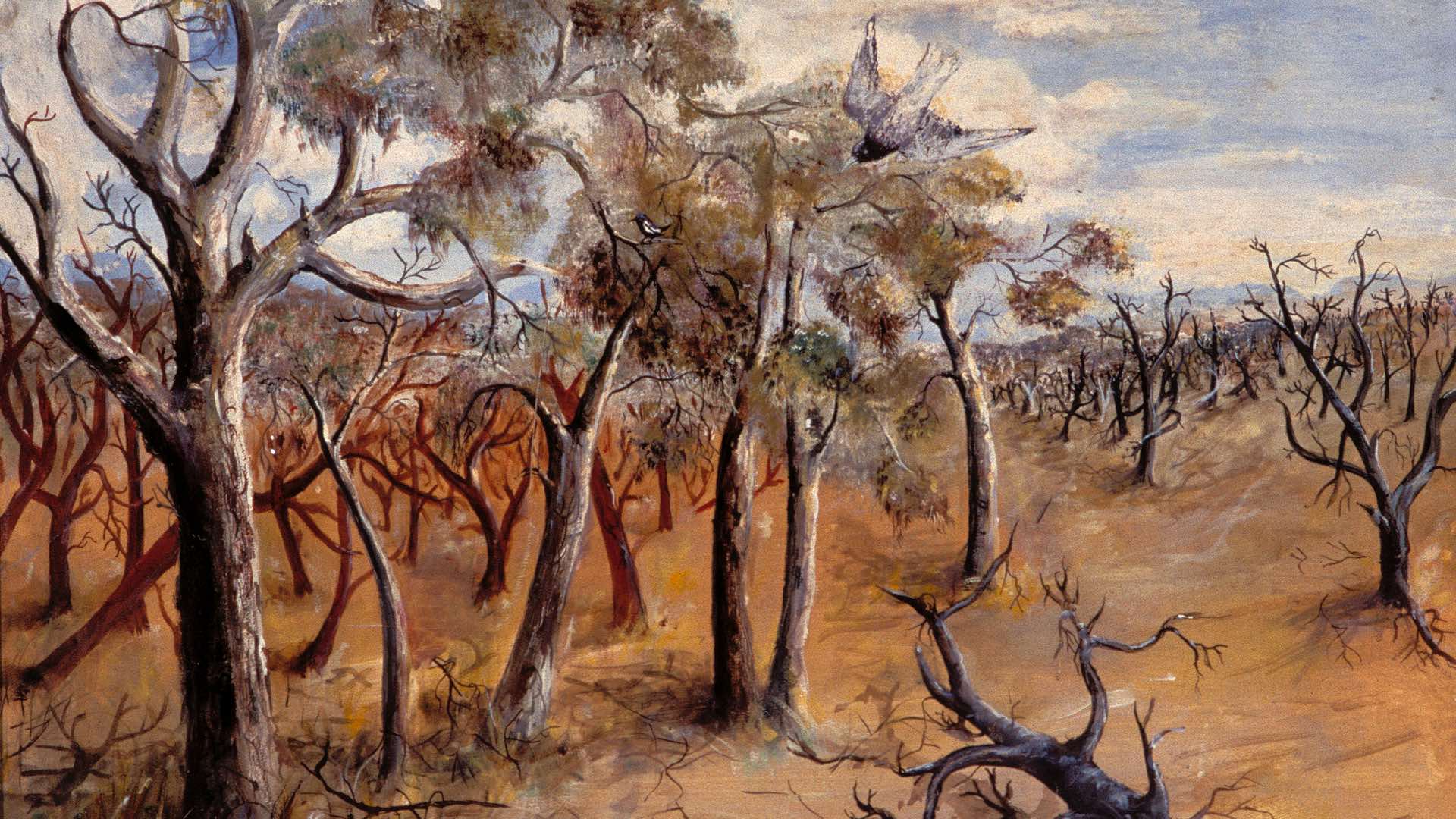Five New Melbourne Art Exhibitions to Jump-Start Your June
Go back to the '90s at NGV Australia or jump on an inflatable installation that explores colonisation.
Five New Melbourne Art Exhibitions to Jump-Start Your June
Go back to the '90s at NGV Australia or jump on an inflatable installation that explores colonisation.
As winter is finally descends upon us and we bunker down for the grey and chilly months, June's selection of contemporary Melbourne art exhibitions will help you see the brighter side of spending your time indoors.
This month you can consider colonisation through an immersive jumping castle, explore Australian art history with the Boyd family legacy or engross yourself in 'free-form abstract' paintings. With these and many more great exhibitions to see throughout June, escaping the incoming wind and rain is actually quite enjoyable.
-
5

Maybe you lived through it. Maybe you were too young. Maybe you weren’t even around yet. Whichever applies, we can still all agree that the ’90s gifted the world with a host of wonders. The music, the clothing, the TV, the movies, the stars…if they were around in Australia two decades ago, then they probably make an appearance at NGV Australia’s new exhibition.
On display at the Ian Potter Centre from until October 1, Every Brilliant Eye: Australian Art of the 1990s celebrates the creativity of the period in question, featuring more than 100 works from the NGV Collection, plus selected pieces relating to various artist collectives, artist run spaces and subcultures that emerged during the influential decade. If the name sounds familiar, that’s because it comes from a Died Pretty track. And if it doesn’t, make hunting down the song your first piece of ’90s fun.
There’s plenty on offer in the exhibition itself, including an entire room dedicated to club culture, including a music video and fashions from the era on display. Or, feast your eyes on all things grunge, check out the work of the three Indigenous female artists who represented Australia at the Venice Biennale of 1997 (Emily Kam Kngwarray, Yvonne Koolmatrie and Judy Watson), or enjoy an Unplugged Live conversation series complete with chats with ’90s musos, as hosted by The Panics’ singer-songwriter Jae Laffer.
-
4

Brook Andrew has spent much of his extensive career exploring the dominant narratives and histories around colonialism through large-scale gallery interventions and immersive installations. One such major installation is The Cell, a work that was first shown at Sydney’s Sherman Contemporary Art Foundation and is now temporarily installed at The Substation in Newport. It invites audiences to take part in a jumping castle experiment, which muddies the distinction between ‘sanctuary and detention’. Adorned with traditional Wiradjuri patterns, the inflatable space creates a stimulating juxtaposition with its light-hearted format meeting a sense of anxiety as Andrew conjures the illusion of shrinking and constricting whilst inside.
Over a long and successful career, Andrew’s interdisciplinary talents have seen him exhibiting internationally since 1996, where he often works closely with diverse communities along with public and private collections. The Cell is on display now for a short time only, closing Saturday June 10.
-
3

Last year Melbourne-based artist Rushdi Anwar returned to his homeland of Kurdistan to work inside Iraqi refugee camps, which more than 1.5 million people currently call home. During this visit, from October 2016 to January 2017, Anwar created The Notion of Place and Displacement, a photo series that explores the daily lives of those living in the camps and reveals the difficulties faced by people suffering from forced displacement and dislocation.
Anwar’s Kurdish heritage allowed him a unique insight into the lives of those living here — and while his photographs present the upsetting realities for those in the camps, he also portrays their courage and hope and shines a light on the socio-political struggles faced by the region in an effort to evoke compassion.
The Notion of Place and Displacement is presented at MARS Gallery in Windsor and can be seen from Thursday, June 8 until Saturday, June 24.
-
2

This month at Richmond’s Charles Nodrum Gallery, Melbourne-based artist David Harley will exhibit his large-scale abstract works, which he creates through a mix of new and old technology. These floor-to-ceiling digital paintings stretch the full length of the gallery’s walls and present Harley’s complex and radiant works in their fullest possible glory.
Having been painting abstract works for decades, Harley has, since the 1990s, increasingly incorporated new technology into his work, including large-format printing, virtual three-dimensional constructions and projected animations. Harley works closely with each gallery he exhibits — going as far as creating visual models of the space to shape his paintings to the walls — to reflect the architecture of the gallery, creating an immersive experience for the audience.
Alongside numerous solo exhibitions, Harley has recently completed two commissions for Deakin University’s Burwood campus, and another for National Australia Bank. David Harley: free-form propositions #2 is on display now until Saturday, June 17.
-
1

The Boyd family is one of the great Australian art dynasties, which you can explore as the Heide Museum of Modern Art opens up its extensive archives. The legacy of Merric and Doris Boyd — and their five children: Lucy, Arthur, Guy, David and Mary — will be showcased, as each family member has achieved artistic greatness throughout the last 100 years.
As was often the case, Heide’s founders John and Sunday Reed had their ears to the ground and acquired many of the Boyd family’s (and closely associated artists) works during the 1940s and ’50s. The many works exhibited include Arthur’s surrealist-expressionist paintings, Merric’s art nouveau pots and drawings, Guy Boyd’s bronze portraits and Lucy’s tile designs. In addition, you’ll see works by the many great artists who spent time at the family’s studio known as the ‘Arthur Merric Boyd (AMB) Pottery’, such as sculptures and paintings by John Perceval and earthenware by prominent gardener and conservationist Neil Douglas.
